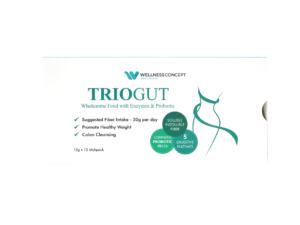Boost your metabolism naturally with probiotic at Wellness Group
What if the secret to a faster metabolic rate isn’t found in extreme diets or supplements, but within your own gut? Emerging science reveals that trillions of microorganisms in our digestive systems play a pivotal role in how bodies process nutrients and manage energy. These live cultures – particularly specific strains of Lactobacillus and Bifidobacterium – do more than support digestion. They actively influence biological processes tied to calorie utilization and fat storage.
Recent studies highlight how an imbalance in gut bacteria families like Bacteroidetes and Firmicutes can affect weight patterns. This discovery has shifted focus toward research on probiotics and weight management, showing how certain strains help reduce belly fat and improve metabolic efficiency. Unlike temporary fixes, these microorganisms work by optimizing nutrient absorption and regulating appetite signals through compounds like short-chain fatty acids.
Wellness Group’s specialists use this cutting-edge science to create tailored plans for clients across Malaysia. Their team analyzes individual gut health profiles to recommend targeted probiotic solutions available via fermented foods or high-quality supplements. Available Monday-Saturday, they guide clients through sustainable strategies that align with their unique biological needs.
Key Takeaways
- Gut microorganisms directly influence how the body processes food and stores energy
- Specific probiotic strains help balance bacteria linked to healthy weight patterns
- Scientific evidence connects probiotic use to improved fat metabolism and appetite regulation
- Personalized approaches yield better results than generic probiotic recommendations
- Metabolic health improvements occur through natural biological pathways, not artificial stimulants
For those seeking science-backed strategies, Wellness Group offers consultations at WhatsApp +60123822655. Their experts help clients harness microbial allies for lasting metabolic benefits – no drastic lifestyle changes required.
Understanding the Benefits of Probiotics for Metabolic Health

Click to LEARN MORE
The human digestive system does more than process meals – it houses microscopic allies that shape how we convert food into fuel. These live cultures actively transform nutritional absorption patterns while influencing biological processes far beyond the stomach.
How Probiotics Enhance Digestion and Energy Utilization
Specific strains optimize food breakdown by producing enzymes that target complex carbohydrates and fats. Lactobacillus species, for instance, reduce calorie extraction from meals by 3-5% according to recent studies. This process creates short-chain fatty acids like butyrate, which:
- Activate fat-burning mechanisms
- Regulate blood sugar levels
- Strengthen intestinal cell function
“Butyrate serves as both an energy source for colon cells and a signaling molecule that influences metabolic rate.”
The Role of Gut Bacteria in Overall Wellness
A balanced microbial community supports vitamin production and inflammation control. Beneficial microorganisms strengthen the intestinal barrier, preventing toxins from entering the bloodstream. This directly impacts:
| Bacterial Family | Key Function | Health Impact |
|---|---|---|
| Bifidobacterium | Vitamin B synthesis | Energy production |
| Bacteroidetes | Fiber fermentation | Appetite regulation |
| Lactobacillus | Pathogen inhibition | Immune support |
Wellness Group’s nutrition specialists explain these interactions during consultations available six days weekly. Their team personalizes recommendations based on individual gut profiles, ensuring optimal microbial support for metabolic needs.
Boost your metabolism naturally with probiotic
Emerging studies suggest that gut microbes play a crucial role in managing energy expenditure. Researchers now confirm certain strains actively influence how the body processes nutrients and burns calories. This connection opens new possibilities for addressing weight concerns through microbial optimization.

Insights from Recent Research Studies
A 2023 clinical trial demonstrated Lactobacillus gasseri reduced waist measurements by 4.6% in participants over 12 weeks. Another study involving 114 adults showed Lactobacillus sakei decreased body fat mass by 2.3 kg compared to placebo groups. Key findings include:
- Dual-action results: L. curvatus and L. plantarum combined reduced visceral fat by 8%
- Enhanced calorie burning: 100mg caffeine paired with probiotics increased metabolic rates by 14%
- Faster outcomes: Changes became measurable within 6-8 weeks of consistent use
How Specific Probiotic Strains Work
Different species employ unique biological strategies. Some improve insulin response, while others stimulate fat oxidation. The table below highlights top-performing strains:
| Strain | Mechanism | Observed Effects |
|---|---|---|
| L. gasseri | Blocks dietary fat absorption | 1.5 kg weight reduction average |
| B. lactis | Enhances thermogenesis | 5% metabolic rate increase |
| L. sakei | Modulates appetite hormones | Reduced waist circumference |
These microorganisms work synergistically with compounds like catechins from green tea. Regular consumption helps maintain balanced gut bacteria while supporting sustainable weight management strategies. Wellness Group’s team uses these insights to recommend strain-specific solutions for Malaysian clients.
Probiotics and Weight Management: Key Insights
Science continues uncovering surprising connections between gut bacteria and body composition. Research now shows these microorganisms may help address modern challenges like obesity through biological pathways that influence fat storage and energy use.
Supporting Fat Loss and Managing Waist Circumference
A 6-month trial involving 220 participants revealed compelling results. Those taking Lactobacillus and Bifidobacterium blends lost 3.2% more body weight than placebo groups – without diet changes. Specific strains like Bifidobacterium animalis reduced inflammation markers by 18%, creating better conditions for fat loss.
| Strain | Duration | Key Result |
|---|---|---|
| L. gasseri | 12 weeks | 4.6% waist reduction |
| B. lactis | 6 months | 2.3 kg fat loss |
| L. plantarum | 8 weeks | 8% visceral fat decrease |
These cultures work through multiple mechanisms:
- Blocking fat absorption in intestines
- Increasing hormones that signal fullness
- Enhancing calorie burn during rest
“Probiotics help maintain weight loss by improving insulin sensitivity and reducing inflammatory triggers.”
For Malaysians managing weight, combining probiotics with moderate exercise shows promise. A study noted 23% greater belly fat reduction when participants paired daily cultures with 30-minute walks. Wellness Group’s experts emphasize personalized strain selection for lasting results.
Safety and Side Effects of Probiotic Use
While probiotics offer numerous health advantages, understanding their safety profile ensures optimal results. Most people tolerate these beneficial bacteria well, but temporary adjustments may occur as the gut adapts to new microbial residents.

Understanding Potential Gastrointestinal Reactions
Initial use sometimes triggers mild digestive responses. These effects typically fade within 1-2 weeks as the body adjusts. Common temporary reactions include:
| Reaction | Frequency | Management Tips |
|---|---|---|
| Bloating | 15-20% of users | Start with half dose |
| Gas | 10-15% of users | Take with meals |
| Mild cramps | 5-8% of users | Stay hydrated |
Certain groups should consult healthcare providers before starting probiotics. This includes people with compromised immunity, critical illnesses, or those taking immunosuppressant medications. A 2023 review noted these precautions help prevent rare but serious complications.
Practical strategies enhance safety and comfort:
- Begin with low-strength formulas
- Choose products with third-party testing
- Space intake away from antibiotics
“Gradual introduction allows microbial ecosystems to adapt without overwhelming the system.”
For those exploring digestive wellness strategies, professional guidance ensures personalized recommendations. Persistent symptoms lasting beyond three weeks warrant medical consultation to rule out underlying conditions.
Integrating Probiotics into Your Daily Routine
Building a probiotic-rich routine doesn’t require drastic changes. Simple adjustments to meals and habits can create lasting microbial benefits. Start by combining food sources and supplements for optimal diversity.
Dietary Sources, Supplements, and Timing
Fermented foods offer natural microbial support. Look for:
- Yogurt labeled “contains live cultures”
- Unpasteurized kimchi or sauerkraut
- Kefir or kombucha with minimal added sugars
For supplements, choose products with:
| Feature | Recommendation |
|---|---|
| CFU Count | 10-50 billion per serving |
| Strains | 3-7 clinically studied types |
| Certification | Third-party tested |
“Multi-strain formulas show 23% better colonization rates compared to single-strain options.”
Practical Tips for Consistency
Pair probiotic intake with existing habits:
- Add yogurt to morning smoothies
- Take supplements while brewing afternoon tea
- Include miso soup in dinner plans
Those new to probiotics should begin with small portions. Gradually increase servings over 2-3 weeks to allow gut adaptation. Track changes in energy levels or digestion to gauge progress.
For personalized schedules, Wellness Group provides timing recommendations based on individual goals. Reach them at +60123822655 (Monday-Friday 9:30 AM-6:30 PM, Saturday 10 AM-5 PM) to align intake with your unique biological rhythm.
Lifestyle Habits to Complement Probiotic Benefits
Quality sleep and regular movement form the foundation for metabolic efficiency. Research reveals these daily practices work alongside beneficial bacteria to optimize how bodies process fuel and manage energy stores.
Enhancing Metabolic Health with Sleep and Exercise
Sleep duration directly impacts hormonal balance. A University of Chicago study found participants sleeping 5.5 hours nightly lost 55% less fat than those getting 8.5 hours. Chronic short sleepers (6 hours or less) often carry 5-15 extra pounds of belly fat due to elevated cortisol levels.
Physical activity amplifies calorie burning through multiple pathways:
- Strength training: 20-minute sessions boost calorie expenditure for 2 hours post-workout
- Cardio exercise: Increases energy use for up to 14 hours after activity
- NEAT: Non-exercise movements like walking account for 15-30% of daily calorie burn
| Activity | Duration | Calorie Impact |
|---|---|---|
| Stair climbing | 10 minutes | +100 calories burned |
| Standing desk use | 3 hours/day | 750 weekly calories |
| Post-meal walk | 15 minutes | 20% better glucose control |
“Combining adequate sleep with movement creates a metabolic multiplier effect – each habit enhances the other’s benefits.”
Simple changes yield significant results. Taking phone calls while pacing or opting for stairs instead of elevators increases NEAT. Pair these adjustments with consistent sleep schedules to support gut health and energy regulation.
Metabolic Health and the Gut Microbiome: A Deep Dive
Hidden within our intestines lies a complex ecosystem that shapes how bodies manage energy and combat disease. This microbial community—comprising bacteria, fungi, and viruses—does more than aid digestion. It actively regulates immunity, vitamin production, and hormone balance, all crucial for metabolic health.
The Impact of Short-Chain Fatty Acids on Inflammation
When gut bacteria break down fiber, they produce compounds called short-chain fatty acids (SCFAs). Butyrate, a key SCFA, improves insulin sensitivity and reduces inflammation linked to obesity. Studies show higher butyrate levels correlate with 19% lower blood sugar spikes after meals.
SCFAs also strengthen intestinal barriers, preventing harmful substances from triggering body-wide inflammation. A 2024 trial found participants with balanced microbiomes had 32% lower inflammatory markers than those with dysbiosis.
Emerging Research on Microbial Diversity and Nutrition
Microbial variety influences how nutrients get absorbed. Diverse gut communities produce more vitamins and metabolize food efficiently. Research highlights:
| Bacterial Type | Nutritional Role |
|---|---|
| Bacteroides | Enhance fiber digestion |
| Prevotella | Boost iron absorption |
| Akkermansia | Support blood sugar control |
Recent findings suggest personalized diets based on microbiome profiles yield better health outcomes. For Malaysians, incorporating fermented foods like tapai or tempeh can increase microbial diversity naturally.
“Individualized nutrition plans considering gut bacteria composition improve metabolic responses by 40% compared to generic diets.”
Maintaining this delicate ecosystem requires consistent fiber intake and stress management. Simple steps like adding oats to breakfast or taking probiotic-rich foods support long-term metabolic wellness.
Conclusion
Sustainable health transformations often begin where least expected—within the body’s microbial communities. Research confirms that balancing gut bacteria creates a foundation for improved energy management and nutrient processing. These microscopic allies work through biological pathways refined over millennia, offering solutions rooted in science rather than quick fixes.
Wellness Group’s approach emphasizes personalized strategies based on individual gut profiles. Their experts combine strain-specific solutions with practical lifestyle adjustments, ensuring clients across Malaysia achieve lasting results. This method recognizes that optimal microbial support varies between individuals—a principle backed by clinical studies.
Those exploring gut health improvements can start with simple steps: fermented foods, targeted supplements, and consistent sleep patterns. Pairing these with professional guidance amplifies outcomes, as seen in local case studies. For tailored advice, contact Wellness Group at WhatsApp +60123822655 to schedule consultations available six days weekly.
True metabolic efficiency emerges when science meets personalized care—a philosophy driving modern wellness innovations. By nurturing these internal ecosystems, individuals unlock their body’s innate capacity for balanced energy use and vitality.
FAQ
How do probiotics improve digestion and energy levels?
Probiotics help break down food efficiently, producing short-chain fatty acids that support gut health. These compounds enhance nutrient absorption and optimize how the body uses energy, which may reduce fatigue. Strains like Lactobacillus and Bifidobacterium are particularly effective for digestion.
Can probiotics actually aid in weight management?
Studies suggest certain strains, such as Lactobacillus gasseri, may help manage waist circumference by influencing fat storage and appetite hormones. While they’re not a magic solution, pairing probiotics with a balanced diet and exercise can support sustainable weight goals.
Are there side effects when starting probiotics?
Some people experience mild bloating or gas as their gut adjusts. Starting with low doses, like those in fermented foods (e.g., Activia yogurt), can ease the transition. If symptoms persist, consulting a healthcare provider is recommended.
What’s better: probiotic-rich foods or supplements?
Foods like kimchi, kefir, and sauerkraut provide natural probiotics alongside nutrients. Supplements like Culturelle offer targeted strains for specific needs. A mix of both often works best, depending on individual health goals.
How does sleep affect gut health and metabolism?
Poor sleep disrupts gut bacteria balance, increasing cravings for sugary foods and slowing metabolism. Prioritizing 7–8 hours of rest helps regulate hormones like leptin and ghrelin, which support metabolic efficiency.
What role do short-chain fatty acids play in inflammation?
Produced by gut bacteria during fiber fermentation, compounds like butyrate reduce intestinal inflammation and strengthen the gut lining. This process may lower systemic inflammation linked to obesity and insulin resistance.
When’s the best time to take probiotics?
Some prefer mornings on an empty stomach for better survival, while others take them before meals. Consistency matters most—setting a daily reminder or pairing them with a routine (like breakfast) helps build the habit.
Can improving gut diversity help with blood sugar control?
Research shows a diverse microbiome improves insulin sensitivity. Foods high in prebiotics (e.g., oats, garlic) feed beneficial bacteria, which produce metabolites that stabilize blood sugar levels over time.

Khloe Tan
Khloe Tan is a Certified Nutritionist, Corporate Wellness Trainer, and Holistic Health Specialist with over 15 years of experience in the health and wellness industry. She has delivered more than 100 talks nationwide, inspiring and educating diverse audiences on nutrition, lifestyle, and sustainable wellness. Her work has positively impacted over 3,000 lives, and she continues to champion holistic approaches to well-being in both corporate and personal settings.
Feature Product
-
Hydrogen Water FIlter/Generator
H2zen Portable (White/ Blue)
RM2,600.00 Add to cart Buy NowRated 0 out of 5





